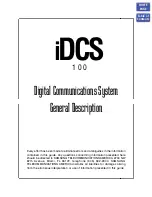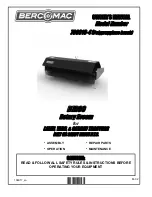
Operating Instructions
NAV350
Commissioning and configuration
8013889/ZML0/2017-06-09
© SICK AG · Germany · All rights reserved · Subject to change without notice
57
Chapter
6
Important
– The S
CAN
V
IEW
in the M
ONITOR
is dependent on the available computing power of the
PC and is not output in real-time. For this reason not all measured values are dis-
played. The same limitation also applies when saving measured values displayed in
a file.
4. After completing the test measurement successfully, save the configuration perma-
nently to the NAV350: Menu NAV350, P
ARAMETER
, S
AVE
PERMANENT
.
6.6
Loading reflector data
Measured reflectors can be written to a text file instead of entering the data in SOPAS ET.
The reflector data saved in the text file must be in ASCII format and can be edited using any
text editor. The files must have the file extension .
IMK
.
Such a file contains all the information for one or more layers: X and Y coordinates as well
as the reflector radius.
Fig. 34:
Example text file with reflector data
The text file is divided into the following elements (from top to bottom):
•
The header lines provide version information.
(They are marked as comment lines with a hash (#) at the start of the line.)
•
The lines with the actual coordinates contain 9 columns (from left to right):
– global identification number
– X coordinate (mm)
– Y coordinate (mm)
– landmark type (1 = reflector (fixed defined))
– landmark sub-type (2 = cylindrical (fixed defined))
– reflector diameter
– Used in layer no. (In the example all reflectors are used in the layer with the layer index
0.) A reflector can be used in up to 3 layers.
Important
On the manual preparation of the text file, at least one space character or tab character
must be used as the separator character in the rows of data.
Reflector data can be read from and saved in a corresponding text file on a data medium
using the buttons O
PEN
and S
AVE
.
#SICK AG
#NAV Layout data
#FileFormat: 0.01
#Sopas NAV350 V1.00 30.11.2010
#Used Layers:
#LayerID #landmarks
# 000
5
#
globID
x[mm]
y[mm] type subtype size[mm] layer1 layer2 layer3
000001
1855
218 1
2
80
0
000002
-1254
-486 1
2
80
0
000003
-1243
-1094 1
2
80
0
000004
-111
-752 1
2
80
0
000005
1928
-245 1
2
80
0














































